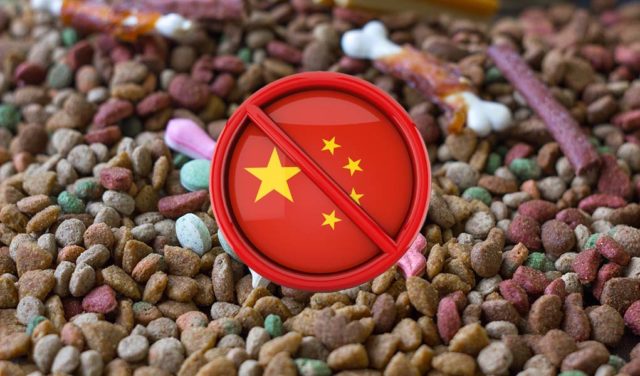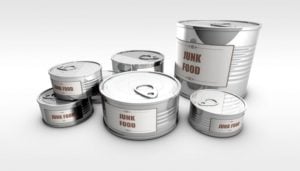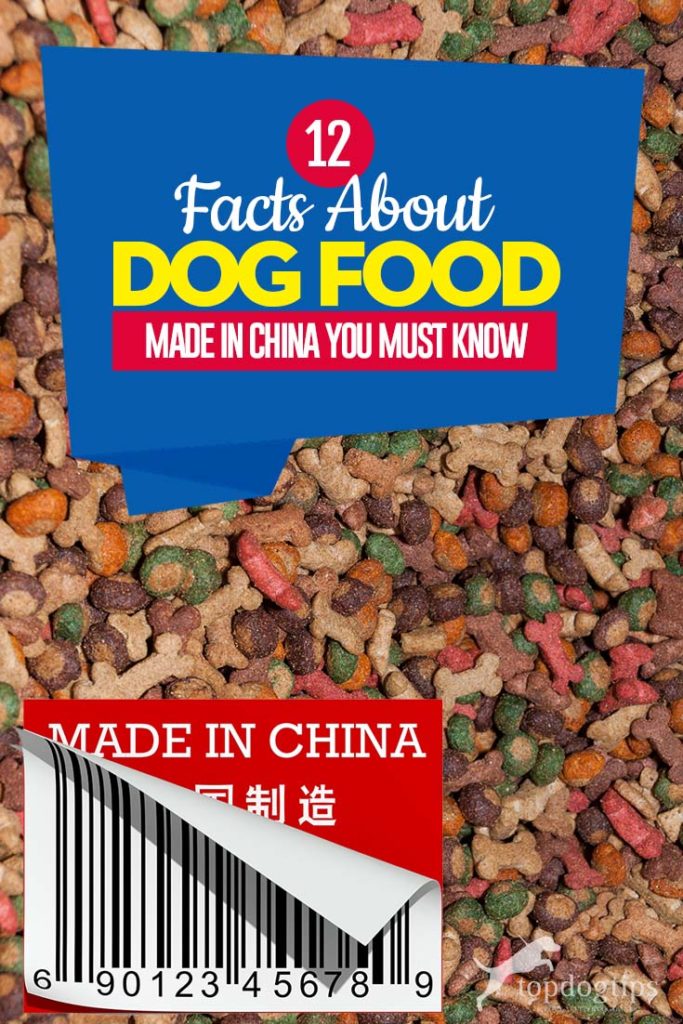
Table of Contents
- 12 Facts About Dog Food Made in China
- 1 China has no comprehensive laws regulating pet food manufacturing
- 2 China has no regulations for pet food manufacturing
- 3 China has no punishment for wrongdoers when it comes to pet food safety
- 4 China's pet food has been under scrutiny for other things, too
- 5 So, just how much pet food does the U.S. source from China?
- 6 But the FDA inspects dog food made in China imports… right?
- 7 Dog food made in China might be pulled from the shelves of U.S. stores, but…
- 8 Does it mean “Made in America” is a safe way to go?
- 9 It’s not only Chinese ingredients or foods that pose a danger to your pet
- 10 How do you get ingredient sourcing information from a pet food company?
- 11 Aren't companies legally required to tell where the ingredients come from?
- 12 Is there an easier way to ensure that pet food is sourced and made in the U.S.?
Our dogs do not have any say over what dog food they get to eat. As pet owners, it's our responsibility to choose a food that will provide our canines with proper nutrition. We also need to ensure that we're selecting safe products that are sourced with good-quality ingredients. Many pet owners have concerns about dog food made in China. So should you be worried?
With everything we know today about the Chinese pet food market, there is no reason for you to include any Chinese ingredients in your dog’s diet and put your pet at risk when there are many safe alternatives out there.
Since the mass commercial dog food recalls back in 2007, many of us dog owners have been hyper-aware of pet foods made or sourced in China. Is that hyper-awareness justified, or was this a once-in-a-lifetime event? Let's take a look at 12 facts that you need to know about dog food made in China.
Here's what you must know about pet food made in China:
Like this infographic? Spread the word! Share it on your site:
<p><strong>Please include attribution to topdogtips.org with this graphic.</strong></p><p><a href="https://topdogtips.org/dog-food-made-in-china/"><img src="https://topdogtips.org/img/China-Pet-Food.jpg" alt="12 Facts About Pet Food Made in China" border="0" /></a></p>
12 Facts About Dog Food Made in China
1 China has no comprehensive laws regulating pet food manufacturing
While there are several regulatory industries in China that monitor human food safety, there are no comprehensive pet food laws or regulations in China for pet food safety. What sparse regulations do exist – recommendations for dog treat standards and a few standards governing dog food export – are only selectively enforced.
The Ministry of Agriculture is charged with regulating the safety of animal feed. However, as with the standards mentioned above, this regulation is only selectively enforced.
What does this mean? This means that pet foods, pet treats, and pet food ingredients that are sourced from China are not monitored or inspected by safety commissions. Consequently, tainted pet foods are not caught until they are already on the market.
2 China has no regulations for pet food manufacturing
In addition to having no regulations for pet food safety, China also has no regulations for the manufacturing of pet food. What does this mean? It means that factories that produce pet food are not regulated for safety, hygiene, or quality control.
There is no requirement for safety testing of foods produced in the factory, no ensuring that food and ingredient storage is safe and hygienic, and no accountability for the production of tainted or poor quality dog food made in China.
Technically, your pet food could be made in a waste management plant from ingredients that have been contaminated by goodness knows what.
RELATED: 25 Dog Treats Made in USA (sourced and packaged)
3 China has no punishment for wrongdoers when it comes to pet food safety
Since there are no regulations in place to monitor pet food production, no laws are being broken when unsafe pet food is produced. As a result, companies or individuals producing tainted pet food are not being punished. Without punishment, these people and organizations are free to continue making a profit by producing tainted products.
What does this mean? It means that companies can (and likely will) continue to produce tainted food. So, long as there is a profit to be made and no consequences for wrongdoing, there is no deterrent for questionable production methods.
4 China's pet food has been under scrutiny for other things, too
When talking about Chinese pet food recalls, most of us assume that the recall is due to contamination. This isn’t always the case. In 2012, Taipei, Taiwan’s city government, demanded that four pet food products sourced in China be removed from store shelves.
After testing some 140 pet foods, Taipei found that four products:
- Belicom’s tuna and beef cat food
- Ever Red’s beef dog food
- Dhobi's beef/chicken/potato dog food
- Maxwell’s beef dog food all had false label claims.
Not a single ounce of beef was found in any of the four foods. The Chinese companies were charged with violation of the Chinese Commodity Labeling Act.
What does this all mean? It means that in addition to the risk of tainted food, pet owners also run a risk of feeding foods lacking animal protein or with mislabeled levels of protein.
Why should you care? It may not seem like a “big deal” for animal protein to be mislabeled, but it is! For pet owners who have to monitor their dog’s protein intake, this is a problem. It also raises questions about U.S. products that source similar ingredients from China for their pet foods.
5 So, just how much pet food does the U.S. source from China?
According to import data from OEC, 18% of dog and cat food was imported to the U.S. from China in 2015. That made China the third-biggest pet food importer to the U.S. in 2015, after Canada and Thailand.
That’s $135 MILLION worth of pet food being imported from a country with no (or unenforced) pet food regulations.
Did I mention that this is only retail pet food products?
That $135 million doesn’t even touch on ingredients that are going into “made in America” pet foods, which are easily imported into the US, purchased by pet owners in America, and consumed by dogs and cats in the US.
6 But the FDA inspects dog food made in China imports… right?
No, they do not.
The FDA’s focus is on food safety within the United States. To require the FDA to inspect and certify every pet product being imported into the country would require 1900 years, according to the New York Times.
Approximately only 1% to 2% of imported food products that come into our country are physically inspected by the FDA. That doesn’t bode well for dog food made in China, considering it's coming from a country where human infants are dying from melamine-tainted milk!
7 Dog food made in China might be pulled from the shelves of U.S. stores, but…
Back in 2014, Chinese-made jerky treats were fingered for containing melamine and causing the death of more than a thousand dogs. At the time, large pet food stores like Petco rushed to pull all “Made in China” treats from their shelves.
What you possibly don’t recall, however, was that a similar “anti-China” sentiment was stirred up in 2007 when China was fingered for pet food-tainted vegetable proteins.
Why should you care? Because, despite the 2007 recall, Chinese-made or sourced products found their way back on the shelves of pet stores worldwide only to be recalled once again.
So, while trusted pet food stores and the FDA make an effort to recall tainted products once they are discovered on shelves, some dog food made in China is still slipping through and making it to pet store shelves in the first place.
So, what can you do? Know the source of your dog food and the ingredients that go into it. If you can’t find sourcing information, contact the manufacturer and ASK.
8 Does it mean “Made in America” is a safe way to go?
No. Wrong again.
Country of origin labeling laws in the United States state that pet food products that are put together in the United States (regardless of the origins of the ingredients) can be labeled as “Made in the USA.”
What does that mean for you? It means that your favorite pet food that is “Made in the USA” might still contain contaminated ingredients imported from China.
9 It’s not only Chinese ingredients or foods that pose a danger to your pet
A good number of pet food recalls have centered on foods that are either sourced from or made in China. This has created a good deal of warranted concern about feeding pets foods that have any connection to China at all.
Certainly, a large majority of tainted pet food can be linked to China, however, other pet foods that are not linked to China can pose danger to your pet too. For example, the recent 2017 discovery of Pentobarbital in Evanger’s pet food.
Evanger’s pet food company claims that their dog foods are produced and sourced in the United States, yet one dog died, and three dogs became sick after eating pentobarbital-tainted Evanger’s food.
We could also look at the Petco warehouse investigation by the FDA in 2008.
The FDA found the warehouse in Joliet, Illinois, to be infested with birds and rodents and requested that Petco clean the location. When Petco failed to bring the warehouse up to standard, the US. Marshalls seized all products from the warehouse for being stored in unsanitary conditions.
Chinese companies aren’t always to blame for pet food contamination. However, the damage from U.S. pet foods is generally contained due to safety standards and production regulations.
RELATED: 19 Controversies About the Pet Food Industry [Infographic]
10 How do you get ingredient sourcing information from a pet food company?
These days, most high-quality pet food companies will advertise their product sourcing information either on their bag or on their website. What should you do if a pet food manufacturer doesn’t provide this information?
Firstly, consider switching your dog to a pet food company that values transparency. These days, ingredient sourcing is a huge selling point for pet foods, and if a company doesn’t advertise where they get their ingredients, they likely have something to hide.
Secondly, contact the pet food manufacturer and ask. The best way to do this is via phone, but via e-mail, you can obtain written proof that you can rely on later if you find the company’s claims to be untrue.
Sarah Ann Taylor also wrote out some great tips on picking top dog food brands based on several criteria that you may want to consider. When asking companies about product sourcing information, have the pet food brand and variety name and ask where EACH ingredient is sourced. If a questionable country (China) is mentioned at any time, it’s time to consider a new pet food company.
11 Aren't companies legally required to tell where the ingredients come from?
Unfortunately, no – that's not the case.
Currently, there is no law or regulation that requires a pet food company to divulge the source of their ingredients to pet owners. So, how do you ensure that your “Made in the USA” pet food isn’t dog food made in China or made with ingredients sourced from the country? It takes a lot of legwork.
The best approach to finding pet food sourced AND made in the USA is to purchase food from a trusted smaller retailer. Many smaller retailers now request full transparency from the manufacturers whose foods they carry. Full transparency means that manufacturers are willing to provide certificates of origin to retailers to prove the origin of their ingredients.
As a consumer, you have the right to ask for a copy of these certificates of origin or to simply ask for full transparency, but that does not mean that you will get it. We need to do our research to find the best dog food for the money that's worth its price tag and reflects the type of quality that pets require.
12 Is there an easier way to ensure that pet food is sourced and made in the U.S.?
The best way to ensure that the pet food you select is sourced and made in the United States is to purchase from a brand known for its quality control policies.
The best resource for pet food companies that maintain full transparency in their quality and origin of ingredients is the Association for Truth in Pet Food website. Companies listed here have publicly pledged to maintain full transparency when it comes to their pet foods.
Unfortunately, the list of pet food companies dedicated to full transparency is quite small at this time. Despite many companies being asked to take the transparency pledge, only thirty-nine companies have taken it so far.
READ NEXT: 12 Dog Foods Actually Made in the USA
Want to share this?















